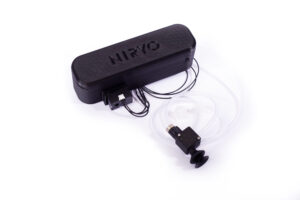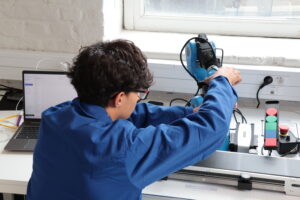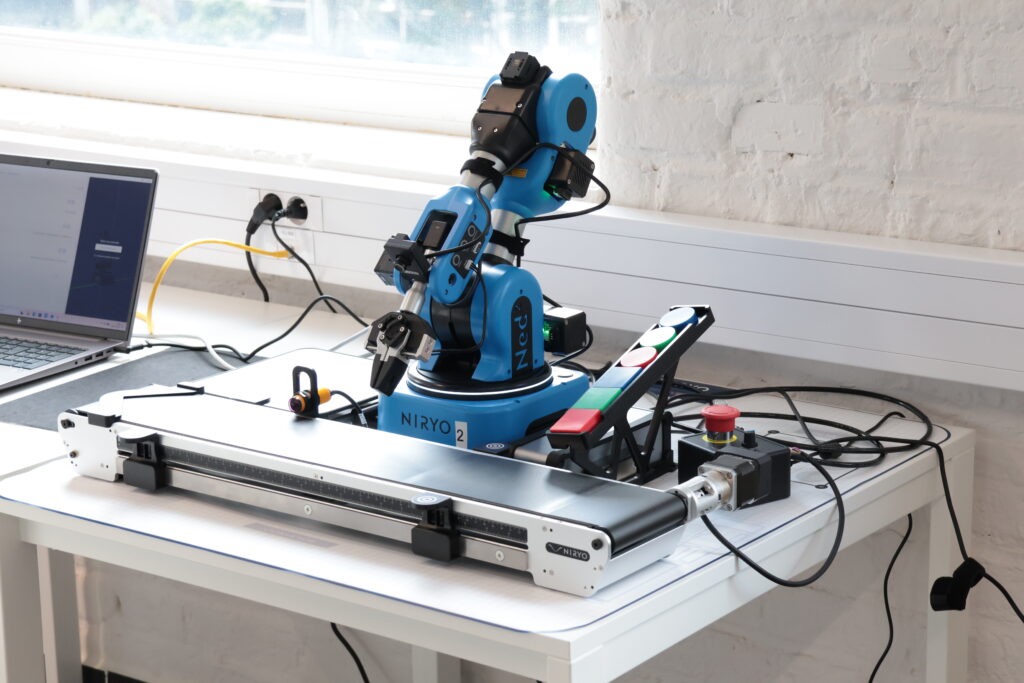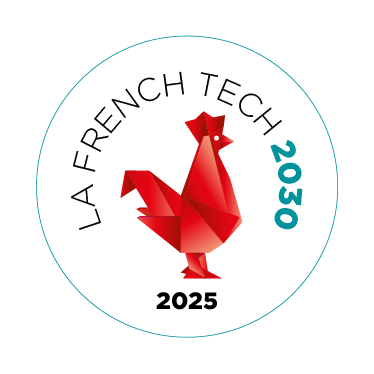Have you ever imagined a world without hands? It would be impossible to grab a pencil to write, tie your shoes, or simply eat an apple. Grasping, this action that comes naturally to us humans, is at the heart of our interaction with the world. What about the robotics sector? Grasping is just as essential, allowing robots to handle objects with precision.
In the field of robotics, grasping plays a crucial role as it serves as the interface between the robot and its environment. In education, grippers are used as versatile teaching tools that allow students to experiment, create, and learn in a fun and interactive way. In this study, we will explore how grippers can revolutionize STEM learning. We will present different types of grippers and their specific educational applications, focusing on their use in schools and classrooms at all levels. Educational robotics kits such as Lego, Ozobot, Thymio, and Makey Makey will also be discussed, along with their potential to develop students’ skills in programming, problem-solving, and teamwork.
The different types of grippers and their characteristics
Not all grippers are alike! Each has its own strengths and is suited to specific tasks. Let’s discover the main types of grippers used in educational robotics activities.
Parallel grippers
Imagine a clothespin, but in an industrial version. Parallel grippers work on the same principle: two or more fingers move parallel to each other to grab an object.
- Structure and function: they are often used in assembly applications due to their high precision. Movements are controlled by computer programs to guarantee a reliable grip.
- Strengths and weaknesses: Their strength lies in their precision and repeatability. However, they can have difficulty gripping objects with complex shapes.
- Typical applications: They can be found in factories assembling small parts and in laboratories for handling delicate samples.
Angular grippers
Angular grippers have fingers that can move in various directions, similar to an articulated arm that adapts to the shape of an object. They are very useful for picking up irregularly shaped objects, such as a ball or a stuffed toy. If you want to learn how to program a robot to sort toys, an angular gripper will be perfect!
Vacuum Grippers
Vacuum grippers use air pressure to stick to smooth surfaces, like when you attach a suction cup to a window. They are ideal for handling flat and smooth objects, such as cardboard or glass. Imagine a robot working in a factory that needs to move boxes: a vacuum gripper would be very practical!

Soft Grippers
Soft grippers are made from flexible materials like rubber or silicone. They can adapt to the shape of any object, even delicate ones. It’s like a soft hand that can gently handle an egg without breaking it. If you want to learn how to program a robot to prepare meals, a soft gripper will be perfect for handling fragile food items.
Educational applications of grippers
Grippers are mechanical devices that allow robots to grab and manipulate objects. When integrated into an educational approach, they offer many opportunities to develop students’ skills at all ages.
Developing analytical and problem-solving skills
Designing and building grippers suited to specific tasks challenges students’ critical thinking. They need to analyze environmental constraints, choose appropriate materials, and find innovative solutions to complete their project. Programming complex movement sequences helps them develop problem-solving skills. For robots to accurately grasp an object, they first need to observe a human doing it.
Acquiring programming skills
Grippers are often associated with programmable robots, providing an excellent opportunity to introduce students to programming. Tools such as Scratch, Python, or Arduino allow them to program complex movement sequences and work on various robotics projects. Educational kits like Lego Mindstorms or Thymio are particularly well-suited for a playful approach to programming.
Developing creativity and innovation
Robotics with grippers stimulates students’ creativity. They can design original robotic arms, create miniature production lines, or automate simple tasks. Team projects encourage collaboration and idea-sharing.
A variety of tools for innovative teaching
The market offers a wide variety of educational kits and tools for robotics equipped with grippers. Devices like Micro:bit, Ozobot, or Makey Makey provide opportunities for creative and personalized projects. Online platforms also offer a wealth of resources and challenges for students of all levels.

Grippers: Key elements in educational robotics
In educational robotics, grippers, as essential components of robots, play a central role in learning robotics from an early age.
Primary education
Educational robotics kits such as Lego Mindstorms, Thymio, or Ozobot, equipped with simple grippers, enable children to carry out fun and educational activities. Building and implementing obstacle courses or sorting objects with these robots fosters their creativity and logic.
Secondary education
In secondary school, projects become more complex, especially in digital sciences. Students can design articulated robotic arms equipped with more advanced grippers, program robots, or use tools like Makey Makey to create musical instruments controlled by objects. These projects help them acquire skills in programming and electronics.
Higher education
At the higher education level, students can engage in research and development of new, more efficient grippers, incorporating concepts of artificial intelligence. These efforts contribute to the advancement of robotics and open new perspectives for future applications.



























